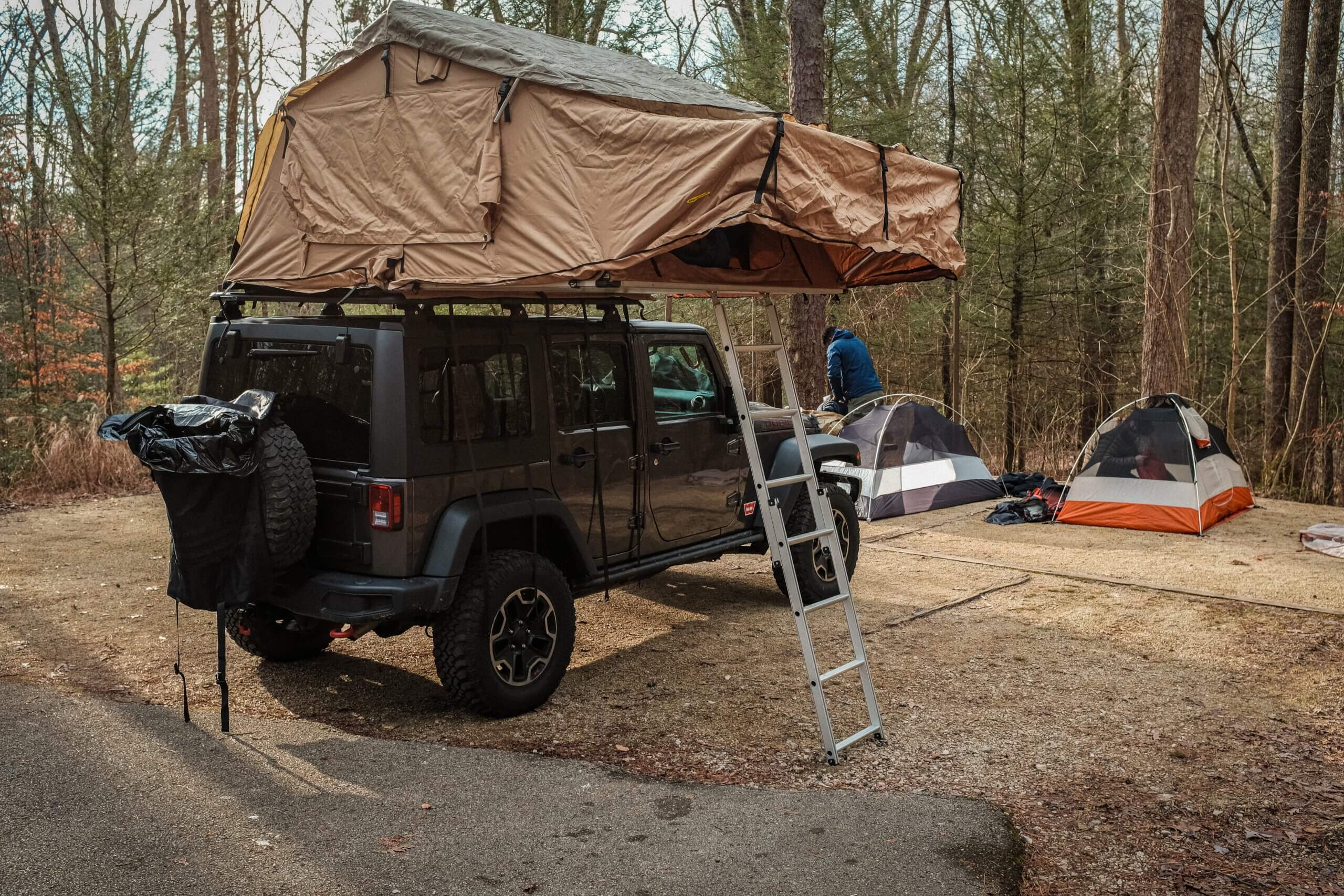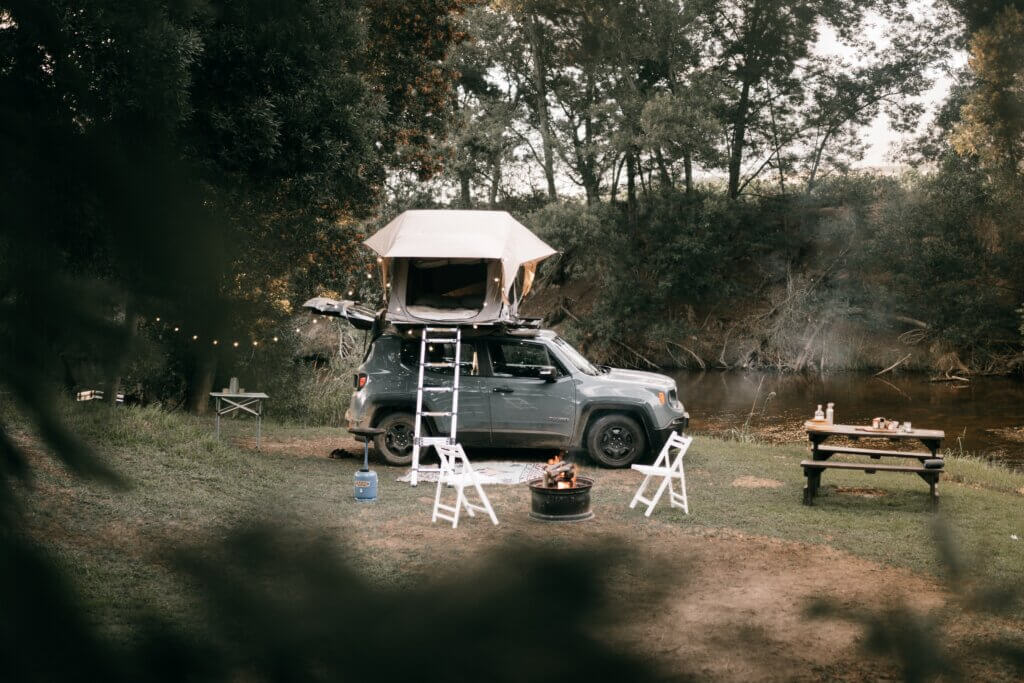
Vanlife Expo: A must-see event for adventure and freedom enthusiasts
At the heart of the passion for freedom on wheels is an unmissable event in France: the Vanlife Expo.

When it comes to going camping or on a road trip, having a roof tent for your vehicle can be a great solution. It offers ease of installation, protection from the elements and a feeling of comfort in the great outdoors. However, choosing the right roof tent and knowing how to install it correctly are important aspects to consider. In this article, we will guide you through the key steps to choose the right rooftop tent for your vehicle and provide you practical tips for setting it up.
Whether you can put a roof tent on your vehicle depends on several factors, such as the type of vehicle you have and its weight capacity. Here are some things to consider.
Make sure you know the maximum weight capacity of your vehicle, as well as the manufacturer’s specifications for how much extra weight the roof can hold. It is essential to respect these limits to ensure the safety and stability of your vehicle when installing your roof tent.
Check if there are strong fixing points on the roof of your vehicle where you can attach the roof tent. Some vehicles are specially designed with integrated roof bars or anchor points to facilitate the installation of a roof tent.
Each tent will have its own compatibility specification, so check well in advance if the model you want is suitable for your vehicle. Some rooftop tent manufacturers provide compatibility lists or recommendations, which can help you make your choice.
Keep in mind that adding a rooftop tent will necessarily increase the overall height of your transport. Care must be taken to account for this increased height to avoid problems when passing under bridges, underpasses or in areas with limited height. With the initial height of your car, you can calculate the maximum height for your tent.
These models are built with a solid frame and a rigid aluminum or fiberglass outer shell. They offer increased strength and durability, as well as better thermal insulation. They can be more complex to set up, but hard top tents are generally easier to set up and take down.
Folding rooftop tents are usually made up of rigid fabric panels that fold and unfold for easy set up and storage. They offer a good balance between resistance and ease of use. Some folding rooftop tents may have extensions or annexes to provide additional space. Today, the most compact tent on the french market is the one of the brand La RTT Française, which folds into three parts.
Soft roof tents are made from durable and strong textile materials, usually waterproof canvas. They are lightweight and easy to set up, often through a folding or unfolding mechanism. These rooftop tents offer great versatility and can be compact when folded up.
Trailer roof top tents are mounted on a separate trailer, making it easy to attach and detach from the vehicle. They generally offer more interior space and can be used as a stand-alone camping solution. The installation and handling of these models can be more complex due to the additional trailer. It is important to note that each type of rooftop tent has its advantages and disadvantages, and the choice will depend on your specific needs, your budget and the type of vehicle you have. It is recommended that you research more information on each type of rooftop tent to make an informed decision.
Rooftop tents are usually made from durable, hard-wearing materials designed to provide protection from the elements while being lightweight and functional. Polyester or cotton canvas is often used for the main part of the roof top tent. These materials are durable, hard-wearing and provide good weather protection. Some fabrics can be treated to be waterproof, UV resistant and flame retardant. The tent frame is usually made of lightweight and sturdy aluminum. This material provides good structural strength while being quite lightweight, making it easy to set up and transport the tent. To ensure water resistant, a waterproof coating is often applied to the outer fabric. This protects the occupants from rain, snow or humidity. Finally, the roof tent’s zippers and seams are reinforced to ensure a good seal and durability.
When choosing your rooftop tent, therefore, opt for durable, weather-resistant and breathable materials for better longevity and greater comfort. Also check the opening and ventilation options to ensure adequate air circulation inside the tent. Be aware that some models offer additional features such as awnings, mosquito nets or storage options. The roof tent can really be customized to your liking.
Thoroughly clean the roof of your vehicle. The roof surface must be clean and free of dirt, debris or anything else that could interfere with the installation. Then gather all the tools and accessories needed for installation :
Read the manual carefully and follow the instructions provided by the roof tent manufacturer. Indeed, each model can have different specificities.
First, you must install the roof bars on your vehicle (if it is not already equipped) following the specific recommendations of the model. Then attach the tent securely to the roof bars using the fixing systems provided.
For adjustments and stabilization of the roof tent, pay attention to leveling. Your vehicle must be parked on flat, stable ground before proceeding with the final installation of the roof tent. Make the necessary adjustments and tightening to ensure the roof tent is properly aligned and secure on your vehicle’s roof. Tighten all fasteners and straps properly.
Give the rooftop tent a slight shake to check its stability and strength. Thus, you check that it is correctly fixed and that there is no excessive play. You can also test the seams and zippers to make sure they are properly sealed and prevent water infiltration, such as spilling a glass of water on them.
Be careful to respect the maximum weight capacity indicated by the manufacturer of the roof tent and avoid overloading your vehicle. Before your first trip with the roof tent, do not hesitate to familiarize yourself with the new volume of your vehicle. You will have to adapt to driving changes and the limitations of adding the tent to your car. You will have to reduce your speed and pay attention to road conditions for a safe trip. Choosing the right rooftop tent for your vehicle and installing it correctly are crucial steps in getting the most out of your outdoor camping experience. Take the time to do thorough research, consider your specific needs, and follow the manufacturer’s instructions. Once set up, your rooftop tent will provide you with a comfortable refuge during your outdoor adventures. Enjoy the freedom and flexibility it offers while exploring new horizons and creating unforgettable memories.
Did you know that with your vehicle equipped with a roof tent you can join the SwapTheRoad community and travel all over the world ? Quickly discover the exchange of leisure vehicles between individuals, try the SwapTheRoad adventure !



At the heart of the passion for freedom on wheels is an unmissable event in France: the Vanlife Expo.

More than 1.8 million viewers tuned in to M6’s Capital to discover a new and fast-growing phenomenon: the exchange of leisure vehicles, a good deal that’s becoming increasingly popular!

Discover Yupwego, the tailor-made insurance for all your trips abroad. Whether you’re away for a weekend or several months, enjoy personalized coverage and services tailored to your needs, so you can travel with peace of mind, wherever you are.
Message
We will get back to you as soon as possible.
Find the answers to the most frequently asked questions